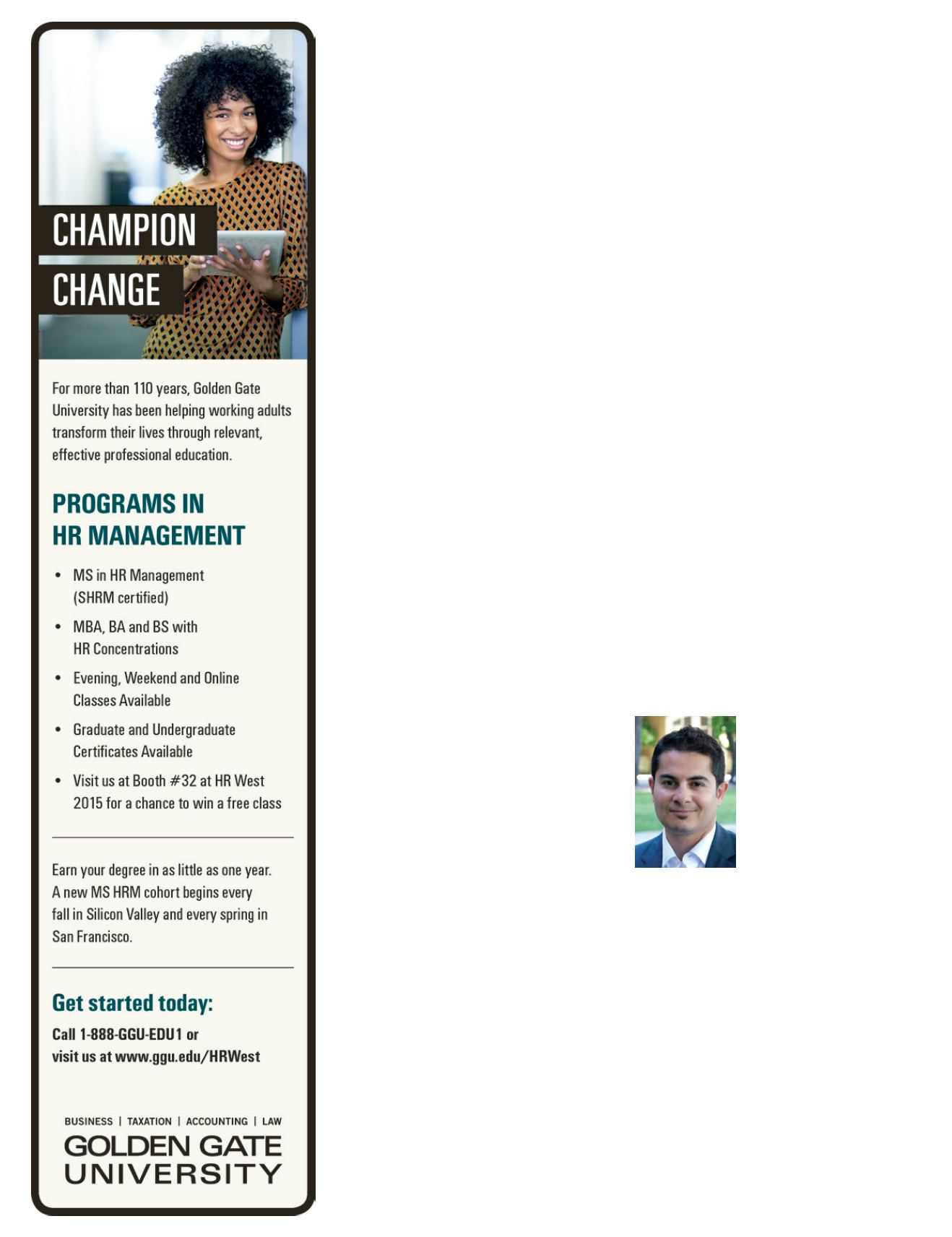
6
HR
West
®
(ABW). ABW initiatives, which typically detach
space from individuals, allow employees to choose
their work environments based on their immediate
work requirements. These environments often
require a shift in management approaches and a
greater degree of trust across an organization in
order to succeed. In these instances, linking the
changing work environment with other initiatives
can be a strong signal and catalyst for broader
organizational change.
HOW TO INTEGRATE
WORKPLACE STRATEGY
IN HR PLANNING
Workplace Strategy is best developed through
a close collaboration between HR, CRE and IT.
Aligning the knowledge and expertise of all three
functions within a cohesive strategy is ultimately
the key to success. HR occupies a unique position
in this triangle with the ability to drive Workplace
Strategy by linking it to HR Planning and, therefore
the organization’s overall strategy.
In order to do this successfully, we must first
envision the workplace development process as a
long-term evolution rather than discrete initiatives
with distinct research, design, implementation and
change management phases. Workplace change
is a gradual development that includes significant
stakeholder engagement and an approach that
respects organizational culture and change
readiness throughout.
The second step is for HR, CRE and IT to
establish a collaborative relationship that will
enable them to take a proactive approach in
identifying opportunities. CRE best understands
the organization’s real estate portfolio strategy,
and space supply and demand. IT understands
the overall technology development timeline.
This information, married with HR’s knowledge
of organizational strategy, talent management
challenges, and desired culture, will highlight the
best opportunities to drive workplace change.
With opportunities identified, it’s important to
develop a Workplace Strategy based on rigorous
research that captures current and future business
requirements. This third step benefits from
quantitative assessments that document space
use, as well qualitative assessments that provide
rich context for quantitative findings and deliver a
description of the organization’s culture and vision
for the future. Extensive stakeholder engagement
and mapping of the organization’s informal network
in this stage is important for leading change later in
the process.
With a Workplace Strategy in hand, the focus
then shifts to development of a workplace vision
and principles that will guide design and change
leadership. In our experience, this must closely
reflect stakeholder input within a compelling
strategic narrative in order to resonate throughout
the course of workplace evolution.
Lastly, to drive and embed newways of working, HR
must lead a campaign that places the workplace
change within the organization’s cultural, historical
and future context. HR must also deliver the skill
development necessary for enabling new ways
of working. Skill development has traditionally
involved training and should be expanded to
include more focused coaching opportunities to
overcome leadership reticence in accepting new
ways of working, typically the strongest impediment
to workplace change.
The role of Workplace Strategy in enabling the
workforce and reinforcing culture is growing. The
time has come for Workplace Strategy to become
a more integral consideration in HR Planning,
organizational strategy and change, an endeavor
HR is uniquely equipped to lead.
HR
Reza Ahmadi, Ph.D. is a
management consultant
specializing in workplace strategy
and organizational change. He has
led workplace strategy assessment,
program development, and change
initiatives, as well as process
improvement and strategic
planning for clients across a
range of industries. He currently
serves as a senior consultant with Emergent Solutions, Inc.
and previously was a Vice President in Jones Lang LaSalle’s
strategic consulting group. Organizations he has worked with
include ADP, Amgen, Bank of America, BioMarin, Citrix Systems,
DIRECTV, Dolby Laboratories, Kaiser Permanente, Matson,
Merck, Philips, QBE Insurance, Numico B.V., UC Berkeley, and
Warner Bros. Contact him at
References
1. Alternative Workplace Strategies. Fourth Biennial Global
Benchmarking Study. New Ways of Working, LLC (2013)
2. Cisco Connected World Technology Report (2011)


